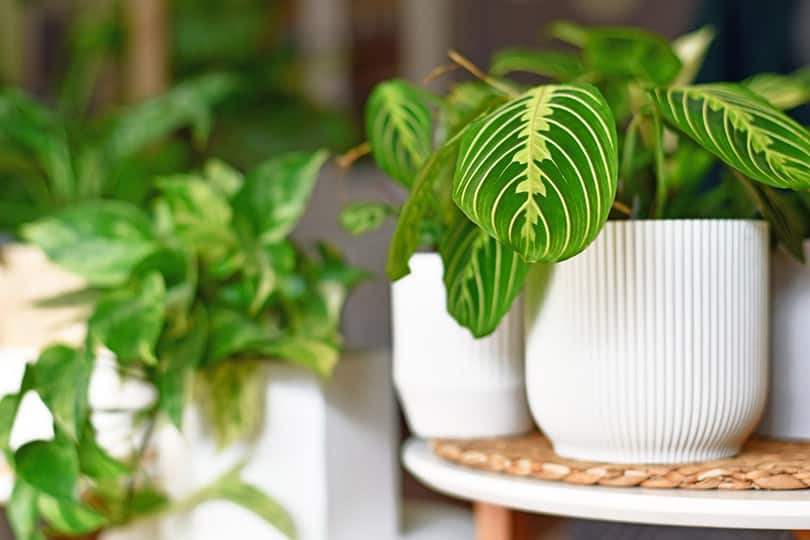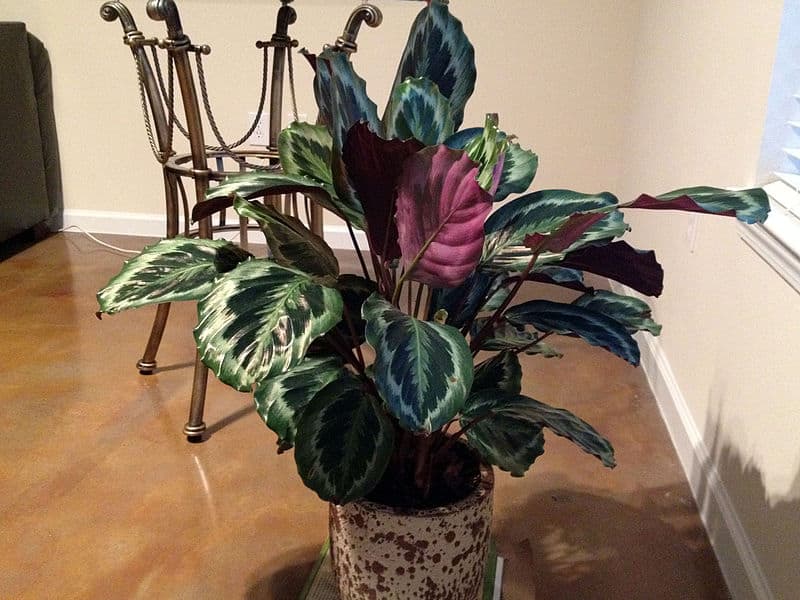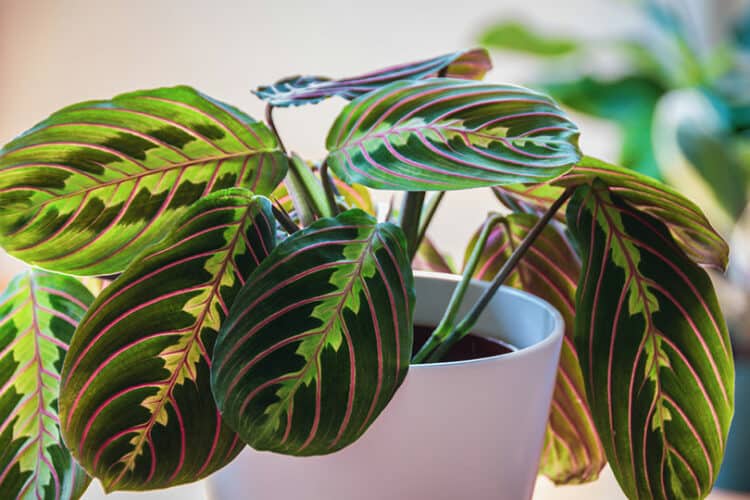Being a plant lover and a cat owner can be difficult. There are so many plants and flowers that are toxic and dangerous to keep in homes where there are curious little kitties about.
If you’re searching for a perfect cat-safe houseplant, you might be wondering about prayer plants. Are they safe to grow when you have cats?
Despite their seemingly infinite varieties, the ASPCA lists prayer plants as non-toxic to cats and dogs. Touching or ingesting the plants’ leaves, roots, or flowers will not harm your beloved pet.
Keep reading to learn all you need to know about prayer plants and cats.
What Is a Prayer Plant?

The prayer plant is a unique-looking tropical plant that is easy to distinguish thanks to its stunning decorative leaves. It’s these leaves that give the plant its name as they raise to an upright position at night and fold in on themselves as if they were praying hands.
There are many different species of prayer plant, but the one people think of most when they hear the name is the Maranta leuconeura. There are several varieties of the Maranta leuconeura species as well.
The Maranta leuconeura ‘Kerchoveana’ variety is also known as the green prayer plant. This is one of the most common houseplant varieties. The leaves are green and they have purple marks that appear between the veins.
The Maranta leuconeura ‘Erythroneura’ is also known as the red prayer plant. It is a tri-colored plant with dark green leaves that have a white or light green color running down the length of the spine. The leaf veins showcase varying shades of red.
The Maranta leuconeura var. ‘Massangeana’ is sometimes known as the black prayer plant. It has silvery-blue leaves with purple dots and an olive-green edging.
What Do I Do If My Cat Eats My Prayer Plant?
While the components of a prayer plant are non-toxic, that doesn’t mean your cat won’t experience any side effects after eating part of your plant.
Cats have specific nutritional needs that can only be met through eating animal flesh and meat, which, as you can imagine, are not present in plant material. Cats are also obligate carnivores, so their digestive systems have evolved to adapt to eating mostly meat. So, while your prayer plant won’t poison your cat, it can still cause adverse side effects.
Your cat might start throwing up after eating your plant as its body tries to get rid of what it cannot digest.
How Can I Protect My Prayer Plant?

Even if your plants are safe to grow around your cats, you still don’t want them poking around in the soil or gnawing at the leaves.
Prayer plants love to hang. They can grow long flowing stems that look fantastic in a hanging pot well out of any curious kitty’s reach.
If you prefer not to hang your plant, you still have options for keeping it safe.
Cats have very sensitive noses, and their sense of smell is one of the ways they identify with the world around them. Putting scents that cats don’t like in your plant pots is a great natural deterrent.
Cats hate citrusy scents so putting orange or lemon peels in the pot can deter them. Making a mixture of apple cider vinegar and water to spray onto your plants or sprinkling cayenne pepper are two other alternatives that should keep your cat away while not harming your plant.
You might also consider growing a decoy plant such as catnip or rosemary. These plants are safe for cats to eat and might make your cat turn his nose up at your prayer plant.
Conclusion
While your prayer plant is unlikely to harm your cat, you should still take some preventative steps to ensure your plant and your kitty aren’t harmed. With a little bit of foresight, your cat and prayer plant can live together harmoniously.
Featured Image Credit: Maritxu, Shutterstock














